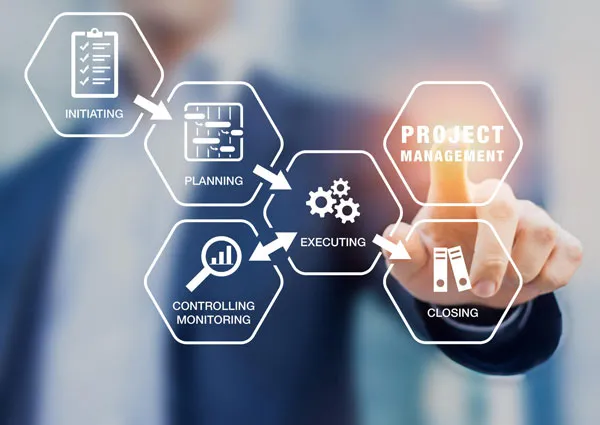Istanbul, Turkey- The construction industry has historically been a vital part of the global economy and is used as a key indicator of either growth or recessionary times. Building Information Modeling (BIM) has grown in adoption over recent years, helping visualize projects and anticipate labor needs and material quantities, while also greatly reducing costly design errors.
The adoption of technology within this sector has grown exponentially, especially with construction project management software solutions, a market projected to expand from US$17 billion in 2024 to US$31.5bn by 2032, growing annually at approximately 8 percent during the forecast period, according to research company Open PR.
Project management software solutions have emerged as essential tools to streamline construction operations, enhance efficiency, and improve project delivery. The following exclusive interview with Ibrahim Imam, Co-Founder, Group-Co-CEO, CEO MENA & APAC at PlanRadar, a company specializing in digital documentation, communication and reporting, offers an expanded view on this trend.
How can construction project management software solutions streamline operations, enhance efficiency, and improve project delivery?
Construction project management software simplifies workflows by automating repetitive tasks, centralizing documentation, and enabling real-time collaboration. This reduces miscommunication and accelerates decision-making. For instance, digital task tracking helps project managers monitor progress, while automated reporting saves time on manual updates. These solutions also enhance resource allocation, effectively deploying materials and labor to minimize delays and cost overruns.
In terms of efficiency, centralized data storage and cloud accessibility provide teams with instant access to critical project information, even on-site. Studies indicate that such tools can reduce project delays by up to 20 percent and administrative costs by 15 percent, making them invaluable for improving project delivery timelines and outcomes.

Image – Ibrahim Imam, Co-Founder, Group-Co-CEO, CEO MENA & APAC at PlanRadar
How does the alignment with BIM happen when it comes to budgeting, scheduling, resource allocation, documentation management, visibility and collaboration tools?
BIM integration with project management software enhances project precision. For budgeting, BIM provides detailed cost estimates linked to project components, allowing for more accurate financial planning. Scheduling benefits from 4D BIM models that combine timelines with 3D designs, enabling dynamic adjustments to project milestones.
Resource allocation is streamlined as BIM’s data-driven approach identifies material needs and tracks inventory in real time. Documentation management becomes more efficient with centralized platforms linking all stakeholders to the same up-to-date files. Visibility and collaboration tools ensure seamless communication by allowing all parties to view and edit models simultaneously, fostering alignment at every stage of the project.
When managing complex projects and meeting tough deadlines, what makes these software solutions indispensable for project owners and what ROIs are they looking at?
For complex projects with tight deadlines, project management software mitigates risks by offering predictive analytics, real-time updates, and centralized control. These tools are indispensable for tracking deliverables, ensuring compliance, and managing subcontractors effectively.
Project owners often see a measurable return on investment (ROI) through cost savings from reduced delays, enhanced resource utilization, and minimized rework. According to research, leveraging digital tools can lead to 10-20 percent savings on overall project costs and improve schedule adherence by up to 30 percent. These efficiencies make such software a vital component of modern construction practices.
What is the role of AI and ML in construction software management solutions in ensuring successful projects?
AI and ML are revolutionizing construction software by enabling predictive capabilities and data-driven decision-making. AI-powered tools analyze historical project data to predict potential delays or cost overruns, helping teams proactively address risks. Machine learning algorithms optimize scheduling by considering variables such as resource availability and weather conditions.
These technologies also enhance quality control by identifying patterns in inspections and detecting deviations from standards. AI-driven data analytics improve stakeholder collaboration by providing actionable insights, while automation reduces human error. With such innovations, construction firms achieve higher accuracy, faster project completion, and greater client satisfaction.








